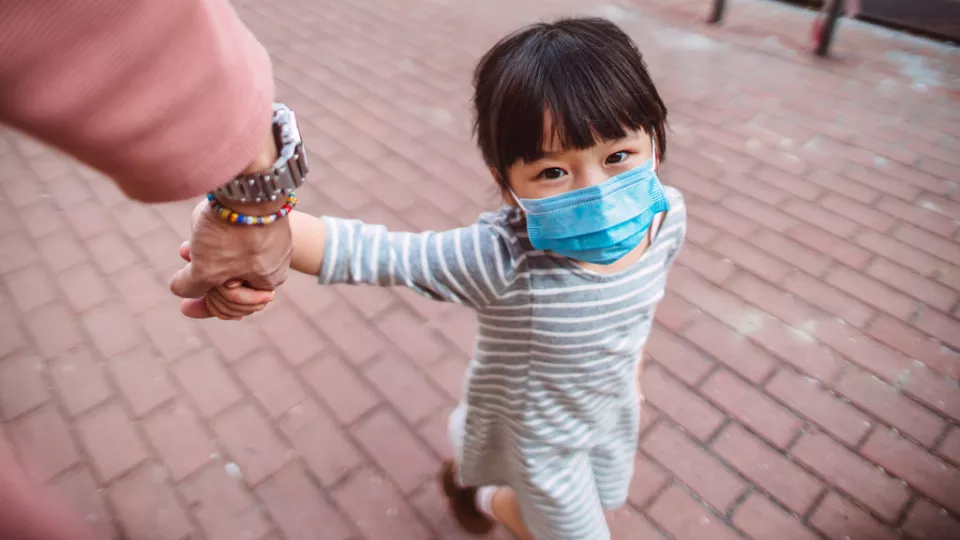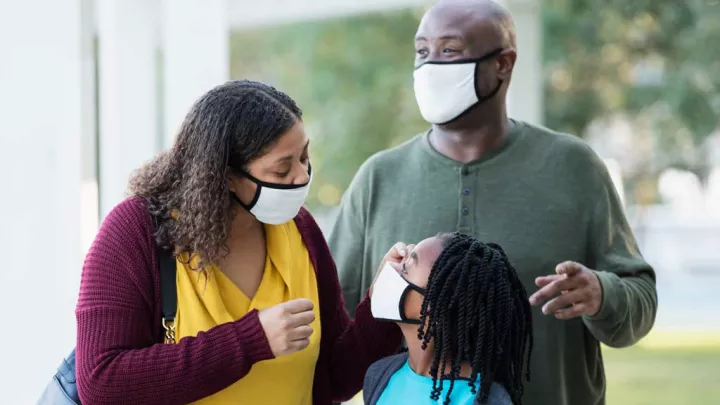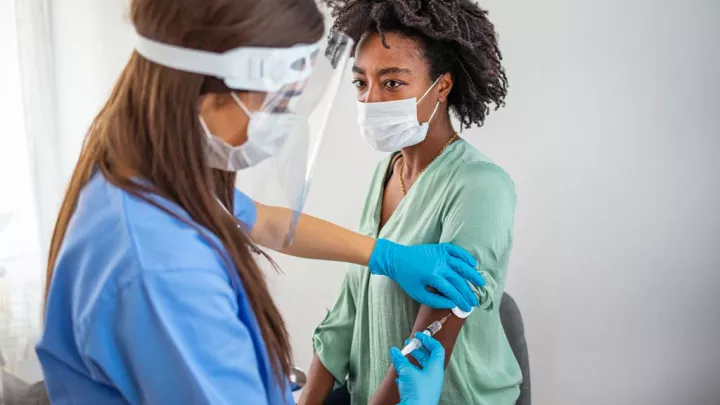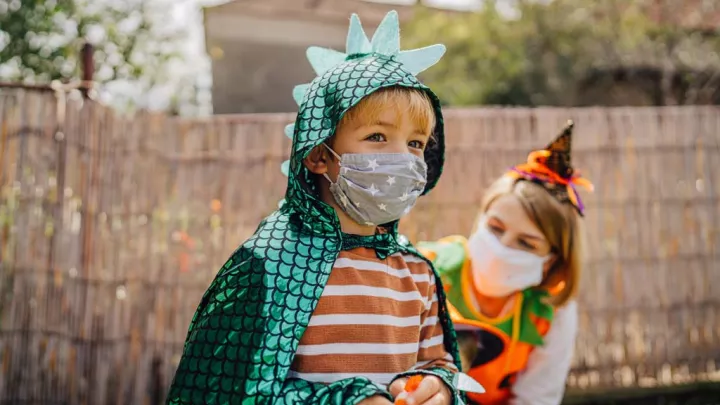
When Can My Kids Stop Masking?
As the COVID-19 pandemic continues and vaccination rates go up, many of us are venturing into civilization again. But how do we balance the risk of getting sick with the need to resume somewhat normal activities like seeing movies, attending sporting events and other social functions that help us feel whole? And how do we protect the kids under age 5 who do not yet have access to a vaccine?
To help families move forward safely, we reached out to Michael Smit, MD, MSPH, Hospital Epidemiologist and Medical Director of Infection Prevention and Control at Children’s Hospital Los Angeles, and Marisa Glucoft, MPH, CIC, Director of Accreditation and Licensing, Infection Prevention and Emergency Management at CHLA. Here are their tips for staying safe and avoiding the virus that causes COVID-19.
1) Get everyone in your family vaccinated and boosted when they are eligible.
The best way to protect young children from COVID-19 is to take them to get vaccinated once they are eligible. It is OK to explain to kids that the shot may hurt and that they might feel sick for a few days after they get a dose, says Dr. Smit. Emphasizing all the things they’ll be able to do after they’re vaccinated may put them at ease.
“Let them know that if they want to go back to playing with friends, playing sports and hanging out,” he says, “this is the quickest way to get there.”
2.) Keep masks handy
The Centers for Disease Control and Prevention (CDC) says that people with up-to-date vaccinations can participate in some indoor and many outdoor activities without wearing a mask. State and local governments and organizations such as school districts and businesses have implemented their own rules based on local risk levels.
In California everyone is required to wear a mask in the following places:
- Public transit
- Health care settings
- Adult and senior care facilities
- State and local correctional facilities and detention centers
- Homeless shelters, emergency shelters and cooling centers
The state also strongly recommends masks in indoor public places such as stores, restaurants, theaters, meetings and state and local government offices that serve the public. In Los Angeles County, masks are strongly recommended in all indoor public places. Californians are not required to wear masks outdoors, though Los Angeles County strongly recommends masks at crowded outdoor events. The take-home point for parents is to carry masks for the entire family. The safest practice for any unvaccinated person, including children, is to wear masks when they are around other people who may not be vaccinated.
“There may be situations where kids are playing in the park outside or going to the beach where they won’t need to wear a mask, but then you may encounter situations where you have to go into a crowded store or business, so just to be on safe side, continue to carry masks with you,” says Dr. Smit.
(Note: Children’s Hospital Los Angeles requires masks to be worn by staff and visitors at all times, regardless of vaccination status. Health care offices or other businesses and organizations may choose to do the same going forward, so check their rules before you walk through the door.)
3) Do your research before signing up for activities.
Kids and parents are looking forward to activities they may have been deprived of during the pandemic. Activities such as day and overnight camps, sports, or recreational swimming may involve a confusing array of cans and cannots. The best way to navigate the hodgepodge of rules is to cross-check what the organization running the activity is doing with what the CDC is recommending and what your local jurisdiction requires.
For the most part, kids should wear a mask and be kept 3 feet apart, Dr. Smit says. For more specifics, check out the following websites:
- CDC’s Guidance for Operating Youth and Summer Camps During COVID-19
- California Department of Public Health Guidance for Overnight Camps
- Los Angeles County Reopening Guidance
4) Take the fun outside.
One way to make activities safer is to do them outside. Evidence collected from studies and contact tracing from around the world shows transmission of coronavirus outside is extremely rare, according to Glucoft.
“When experts looked at how people got COVID-19, most often it was indoors,” she says. “If it did occur outdoors, it was related to densely populated events like sports. It doesn’t mean being outdoors carries no risk, but it is a much lower risk than being in an indoor space.”
Hosting a barbecue in your backyard, for example, might be minimally risky, especially if it is with a small group of people and most adults are vaccinated. If you move indoors as it gets cold at night the situation might warrant more caution, according to Glucoft.
“Think about overall risk factors when planning activities: Are you able to maintain some distance from others? Are you going to be in a large crowd of people, packed in like sardines, or will you be spaced apart?” she says.
Asking unvaccinated kids and adults who will be in close contact with your children to wear masks also lowers risk. Have your kids wear masks if your family is at a gathering where you are in close contact with guests and unsure of everyone’s vaccination status, Dr. Smit advises.
5) Follow travel recommendations.
Many families are eager to travel for fun or to reunite with other family and friends they haven’t seen during the pandemic. Before you book a trip, look up COVID-19 guidelines for the place you are traveling to and for your chosen mode of travel. COVID-19 restrictions for people who are not vaccinated will differ from city to city even within the U.S., Dr. Smit points out. The same is true of airlines, which don’t have universal procedures or requirements, though masking is universally required on public transit, including airplanes, and in stations, terminals and airports as well.
Travel can also be tricky for families right now because the CDC is recommending that unvaccinated people:
- Geta viral test for COVID-19 one to three days before they travel
- Get a viral test again three to five days after they travel
- Self-quarantine for five days after travel
If children who are not yet vaccinated are going to be around a family member who has a weakened immune system, you might want to practice more caution. Have your child wear a mask around that person, for example.
“If you have concern about a family gathering or getting together with a particular family member, such as a grandparent who is at high risk, talk to your pediatrician for recommendations,” Dr. Smit says.
For more information, check out the CDC’s domestic and international travel recommendations.


